Genetic diseases
Genetic diseasesGenetic diseasesa disease caused by a mutation (or problem) in one or more genesSee glossary for more terms > (also called genetic disorders) occur due to changes to DNA, referred to as genetic mutationsGene mutationa change in DNA sequence
See glossary for more terms >. Genetic mutations result in changes in the instructions for making a protein. These changes can prevent or alter protein function or prevent protein production entirely.1
Genetic mutationsMutationa change in a DNA sequence
See glossary for more terms > are mostly inherited from our parents meaning that one or both of your parents passes them down to you. However, genetic mutations can be triggered by environmental factors or occur at random. This means that a child can be born with a genetic mutation without either parent having the genetic mutation themselves. This is called a de novoDe novogenetic mutation: a genetic mutation/alteration that appears for the first time in a family as a result of a variant in an egg or sperm cell of the parents, or a variant that occurs in the fertilized egg itself; this genetic mutation is not present in either parent, only the offspring; it may also occur later in life
See glossary for more terms > occurrence of the disease. Most genetic mutations do not cause disease and are harmless, but others can result in genetic diseases that affect our health.2
There are 2 main types of genetic diseases1:


What are single-gene diseases?
See glossary for more terms > (also called single gene disorders) are caused by a mutation in one of your genes. These types of diseases are currently a major focus of gene therapy research.1
- EXAMPLE: Cystic fibrosis—an inherited, progressive disease that affects the mucus and sweat glands, causing difficulty breathing and lung damage over time3
What are chromosomal diseases?
See glossary for more terms >, where chromosomes (or parts of chromosomes) are missing or altered1
- EXAMPLE: Turner syndrome—a disease caused by a missing or altered X chromosome that affects development in females4
How are genetic diseases passed down?
Remember that, even though diseases often fit into categories like the ones below, every disease is different. If you have questions about a specific disease, you should speak to your doctor or another healthcare professional.
- Individuals carrying 1 mutated copy of a gene in each cell will be affected by the disease
- Each affected person usually has 1 affected parent
- Tends to occur in every generation of an affected family
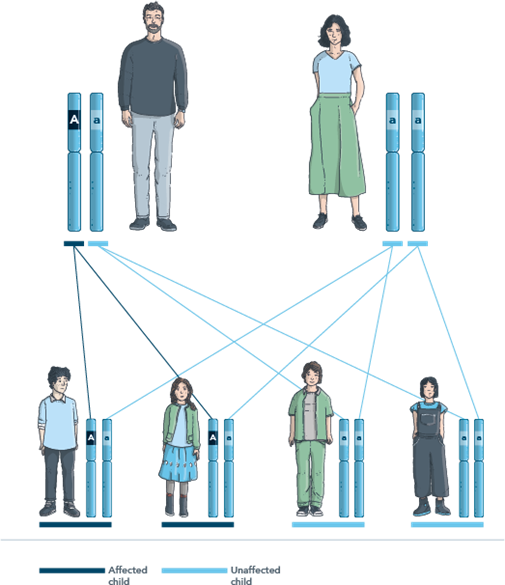
- Affected individuals must carry 2 mutated copies of a gene
- Parents of affected individual are usually unaffected, and each carry a single copy of the mutated gene (known as carriers)
- Not typically seen in every generation of an affected family
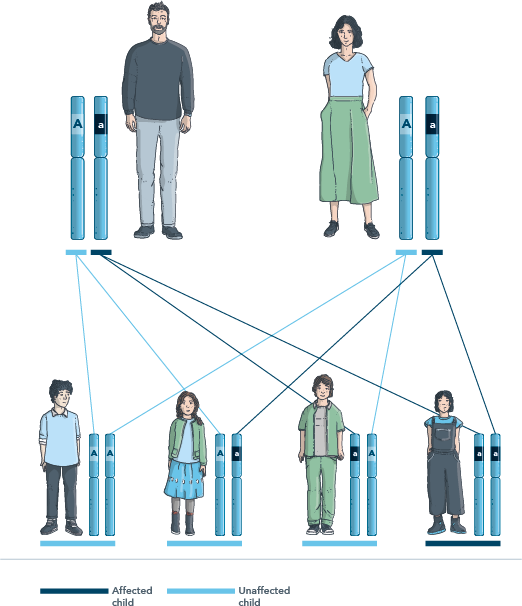
- Only females can pass on mitochondrial conditions to their children (maternal inheritance)
- Both males and females can be affected
- Can appear in every generation of an affected family
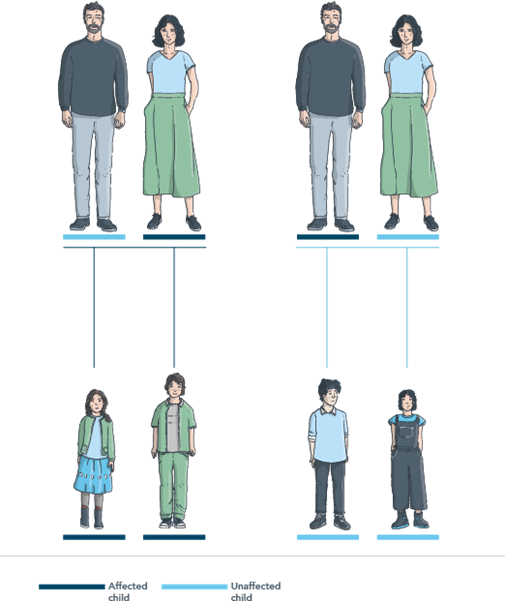
- Females are more frequently affected than males
- Fathers cannot pass X-linked traits to their sons (no male-to-male transmission)
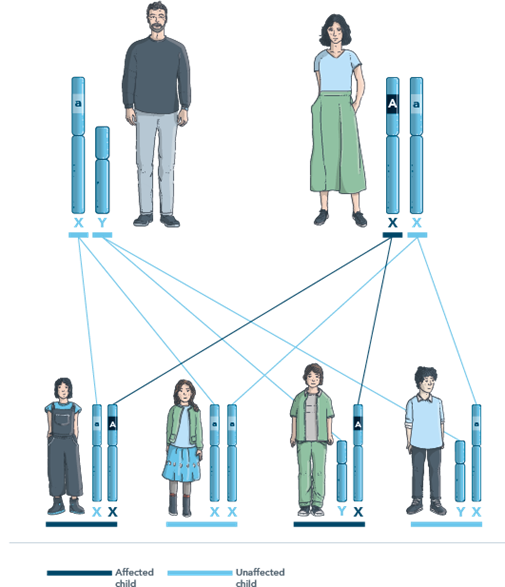
- Males are more frequently affected than females
- Families with an X-linked recessive disease often have affected males, but rarely affected females, in each generation
- Both parents of an affected daughter must be carriers
- Mothers of affected sons are carriers (fathers cannot pass X-linked traits to their sons)
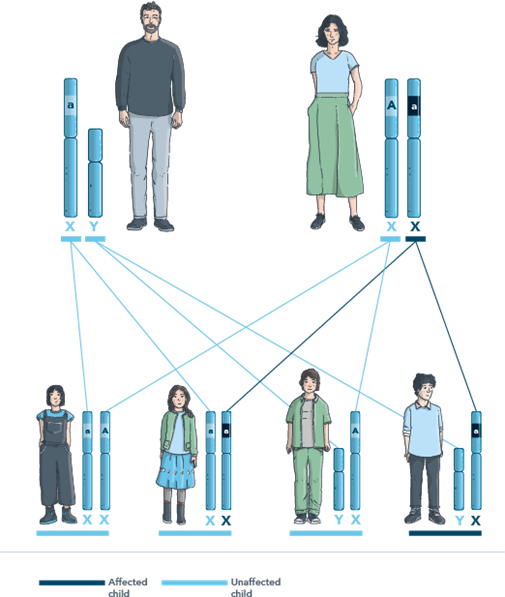
Other types of genetic mutations
See glossary for more terms >. These cancers may be caused by exposure to things in the environment, such as cigarette smoke or radiation. In these cancers, genes are mutated later in life and are found in only certain types of cells. Lung cancer is an example. These cancers are not considered genetic diseases because they are not inherited.5,6
A small portion of cancers are germline mutationsGermline mutationsa gene change in a body's reproductive cell that is incorporated into the DNA of a person’s offspring
See glossary for more terms >, which are inherited. These mutations are present from the time sperm fertilizes an egg (in the zygote) or in the sperm or egg themselves. In contrast to acquired mutations, germline mutations are present in every cell in the body.5 Hereditary retinoblastoma is an example of a disease caused by a germline mutation.7
See what causes genetic diseases
Other Topics You May Be Interested in:

Keep learning with Genehome
References
1. National Institutes of Health. Medline Plus. Genetic disorders. Accessed July 1, 2021. https://medlineplus.gov/geneticdisorders.html 2. National Institutes of Health. Genetics Home Reference. Help me understand genetics. Accessed July 1, 2021. https://medlineplus.gov/download/genetics/understanding/primer.pdf 3. Genetic Alliance, The New York–Mid-Atlantic Consortium for Genetic and Newborn Screening Services. Understanding Genetics: A New York, Mid-Atlantic Guide for Patients and Health Professionals. Genetic Alliance Monographs and Guides; 2010. 4. National Institutes of Health. Genetic and Rare Disease Information Center. Turner Syndrome. Accessed April 26, 2021. https://rarediseases.info.nih.gov/diseases/7831/turner-syndrome 5. American Society of Clinical Oncology. Cancer.Net. The genetics of cancer. Accessed July 1, 2021. https://www.cancer.net/navigating-cancer-care/cancer-basics/genetics/genetics-cancer 6. Jackson M, Marks L, May GHW, Wilson JB. The genetic basis of disease. Essays Biochem. 2018;62(5):643-723. 7. National Institutes of Health. Genetics Home Reference. Retinoblastoma. Accessed July 1, 2021. https://ghr.nlm.nih.gov/condition/retinoblastoma
